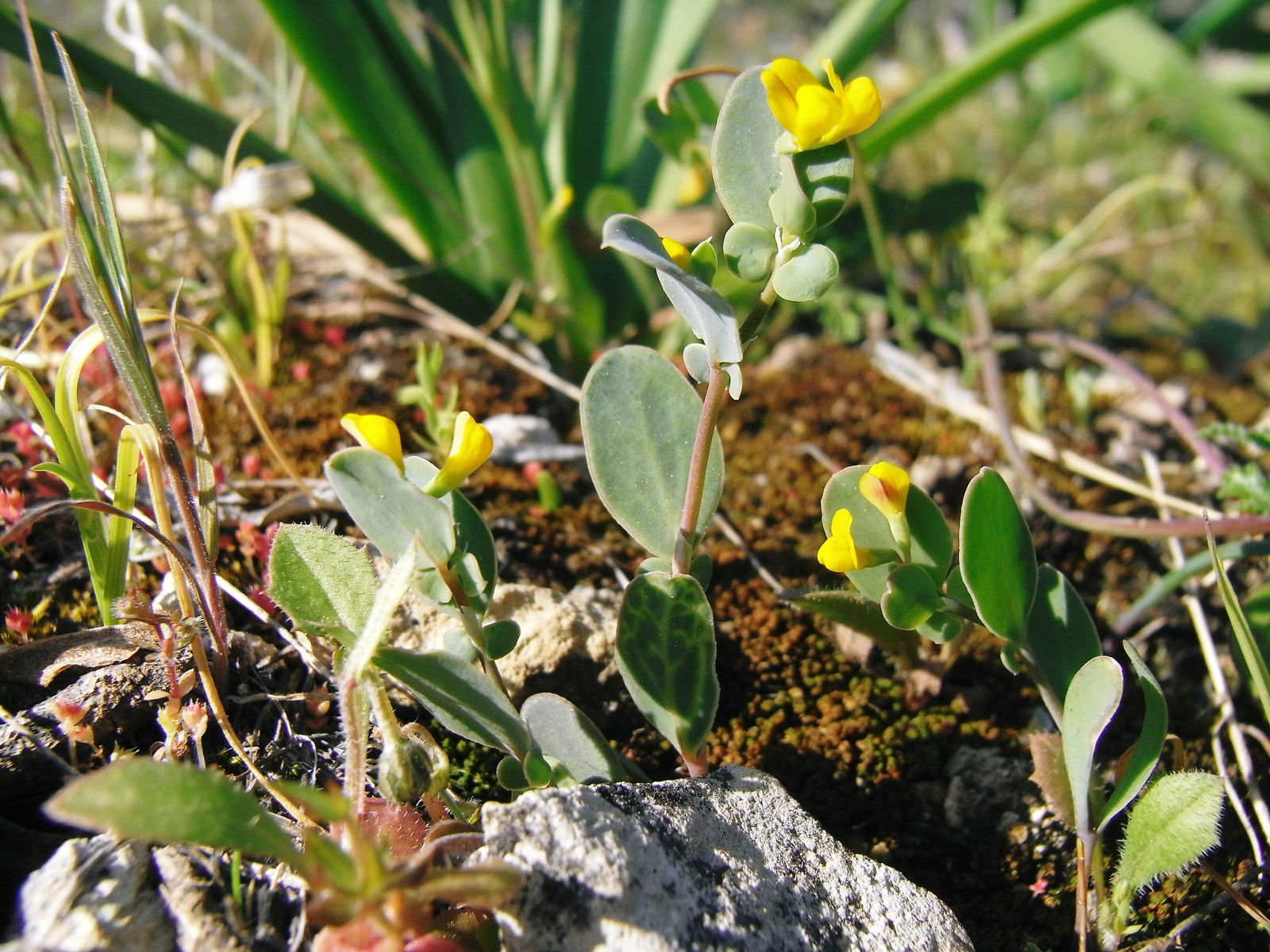Scorpion Senna
coronilla scorpioides
Also known as: ["Scorpion Senna","Scorpioides Coronilla"]
Overview
A deciduous shrub native to Europe and parts of Asia, known for its scorpion-tail-like inflorescences and yellow flowers.
Benefits & Perks
["fragrant flowers","wildlife attractant (bees, butterflies, birds)","drought tolerant"]
Botanical Classification
| Phylum: | Magnoliophyta |
| Class: | Magnoliopsida |
| Order: | Fabales |
| Family: | Fabaceae |
| Genus: | Coronilla |
| Botanical Name: | Coronilla scorpioides |
Plant Characteristics
Basic Information
- Category: Shrubs
- Suitable Location: outdoor garden in a sunny, open position
- Suitable For:
- Is Weed: No
- Allergenicity: low
Environmental Needs
- Climate: {"temperatureRange":"–15–35°C"}
- Hardiness: {"zones":"4–8"}
- Misting: rarely required
- Drainage: Fast-draining to prevent root rot.
- Soil Type: Well-draining, sandy loam with some organic matter; mimics natural habitat.
Maintenance Level
- Maintenance Level: moderate
- Toughness Level: moderate
- Pruning Frequency: Annually in late winter or early spring before new growth begins.
- Pruning Intensity: Moderate; remove up to one-third of old growth to rejuvenate the plant.
Care Details
Ideal Sunlight Coverage:
Full sun (6–8 hours/day); tolerates partial shade but blooms best in direct sunlight.
Sunlight Tolerance Tips:
Acclimate gradually if moving from shade to sun; protect from intense midday heat in summer; ensure good air circulation to prevent fungal issues.
Care Requirements
Care Difficulty
moderatemoderate
Sunlight
full sun
Full sun exposure; rotate pot for even growth; avoid deep shade.
Watering
every 7–10 days during active growth, reduce in winter
Water deeply but infrequently; ensure excellent drainage; avoid overwatering, especially in winter.
Soil
well-drained, sandy loam
pH: Slightly alkaline to neutral (pH 6.5–7.5).
Use sandy soil; ensure fast drainage; avoid heavy clay mixes.
Temperature
Hardy in USDA zones 4–8; tolerates temperatures down to -20°C (-4°F); prefers mild summers but can withstand heat.
Protect from frost; water less in winter; provide shade in extreme summer heat.
Fertilizing
every 4–6 weeks during spring and summer
Use a balanced fertilizer; dilute to half strength; fertilize only in growing season.
Propagation
Methods
Stem cuttings or division; seeds can also be used but may take longer to establish.
Step-by-Step Propagation Guide
- Take 4–6 inch cuttings.
- Remove lower leaves.
- Dip in rooting hormone.
- Plant in medium.
- Keep moist and warm.
Best Time: Late spring or early summer when the plant is actively growing.
Environment
Warm, humid environment with indirect light; maintain consistent moisture.
Medium
Well-draining mix of perlite and peat moss or cactus mix.
Hormone
Optional but recommended for faster rooting.
Timeline
Roots may appear in 3–4 weeks; establish in 2–3 months.
Tools Needed
Pruning shears, rooting hormone, small pots, well-draining medium.
Quick Tips
Use sterile tools; keep cuttings humid; avoid direct sun during rooting.
Pruning & Repotting
Pruning Guide
Method
Cut back leggy stems; thin out crowded areas; shape as desired.
Pruning Plan
Prune to maintain shape, encourage bushiness, and remove dead or weak growth.
Tools
Pruning shears, sharp knife, gloves.
Checklist
Disinfect tools; prune before new growth; remove dead wood; shape evenly.
Repotting Guide
Best Season
Early spring before active growth starts.
Pot Size
Increase pot size by 2–3 inches in diameter; avoid oversized pots.
Method
Remove plant gently; trim roots if needed; repot in fresh, well-draining soil; ensure good drainage.
Suggestions
Repot every 2–3 years or when roots fill the pot; beneficial for younger plants to encourage growth.
Checklist
Use fresh soil; check root health; ensure drainage; water lightly after repotting.
Advanced Care Tips
Watering Mastery
Watering Checklist
Check soil dryness; water deeply; ensure drainage; reduce winter watering.
How to Apply Water Properly
Water thoroughly at the root zone until water drains from the bottom, ensuring even moisture without waterlogging. Water in the morning to allow foliage to dry.
Watering Schedule Tips
Water sparingly, allowing soil to dry completely between waterings. Reduce watering significantly in winter to prevent root rot.
Soil Improvement
Add perlite or coarse sand for drainage; incorporate compost for fertility; ensure good aeration.
Temperature Stress Management
Signs of Temperature Issues
Chlorosis or leaf drop in extreme cold; wilting or scorching in excessive heat.
Cold Stress
Leaves may curl or drop; growth slows or halts; roots can freeze in poorly drained soil.
Solution: Mulch heavily in winter; protect roots from frost; avoid overwatering in cold conditions.
Hot Stress
Wilting, scorching of leaves, or reduced flowering; may go partially dormant in extreme heat.
Solution: Provide afternoon shade; increase humidity; water deeply but infrequently; avoid fertilizing during heat stress.
Fertilizing Guide
Fertilizing Checklist
Use balanced fertilizer; dilute properly; apply in spring/summer only; avoid winter feeding.
Fertilizing Method
Use a balanced, low-nitrogen fertilizer diluted to half strength; fertilize once in early spring and once mid-summer; avoid fertilizing in fall or winter.
Common Problems & Solutions
Toxicity Warning
Cats
Slightly ToxicCats may experience mild gastrointestinal symptoms if they ingest parts of Coronilla scorpioides. The plant's toxicity is generally low, but caution is advised.
⚠️ Symptoms:
🌿 Toxic Parts:
⚡ Toxic If:
if eaten
Dogs
Slightly ToxicIn dogs, ingestion of Coronilla scorpioides can lead to mild gastrointestinal upset. The plant's effects are typically not severe but can cause discomfort.
⚠️ Symptoms:
🌿 Toxic Parts:
⚡ Toxic If:
if eaten
Humans
Slightly ToxicCoronilla scorpioides contains compounds that can cause mild gastrointestinal distress and other mild symptoms upon ingestion. The plant's physiological impact is generally limited to the digestive system.
⚠️ Symptoms:
🌿 Toxic Parts:
⚡ Toxic If:
if eaten
Frequently Asked Questions
Q: Is Coronilla scorpioides toxic to pets?
A: Reliable information on toxicity to pets is not available.
Q: How often should Coronilla scorpioides be watered?
A: Water moderately, allowing the soil to dry slightly between waterings.
Q: Does Coronilla scorpioides attract wildlife?
A: Yes, it attracts bees, butterflies, and birds due to its fragrant flowers.
Quick Reference
| Family: | Fabaceae |
| Care: | moderate |
| Light: | full sun |
| Water: | every 7–10 days during activ |
Get Expert Care Tips
Download the Plantious app for personalized care reminders and plant identification!
Google Play App Store








